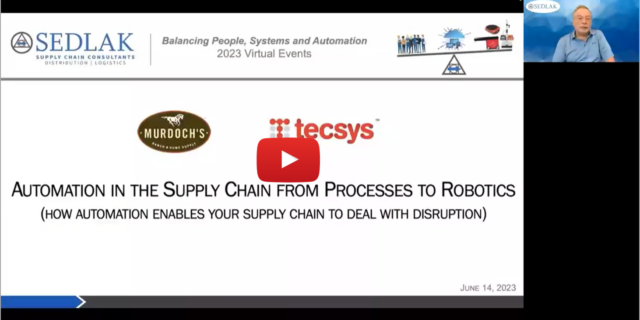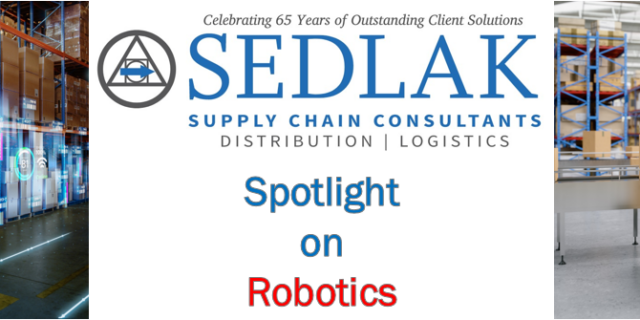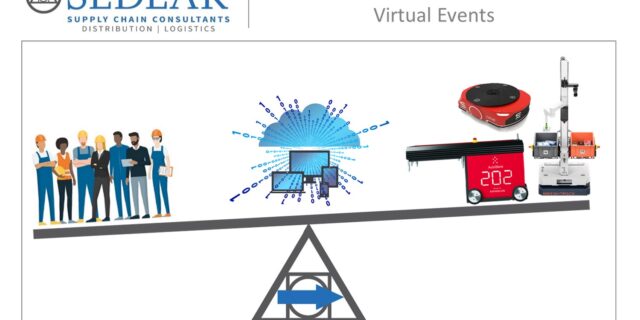Have You Adapted to the “New Normal”?
May 6, 2020 By: David P. Gealy | Topics: Automation & Robotics, Healthcare, Inventory Planning & Optimization, Network Strategy, Omni-channel Fulfillment, Retail & CPG, Supply Chain, Transportation Management, WholesaleWe’ve all seen supply chain disruptions (to put it mildly) over the past couple of months, either on television and websites as we’ve soaked in the information coming at us from the 24-hour news channels, or at the stores (at least the ones that are still open…) as we steer ourselves at least six feet around the nearest person.
The world has been turned upside down due to the COVID-19 pandemic. The global economy is in a tailspin and the prediction of a quick recovery is becoming less likely as mention of a “new normal” begins to dominate the headlines.
But what will “new normal” look like? How does a Supply Chain leader filter through the minutia of information overload? From my lens, a few things seem apparent:
Near Sourcing: The shift over the past few of decades to offshore sourcing of essential healthcare items such as Personal Protective Equipment (PPE), testing supplies and pharmaceutical ingredients/medications will begin to swing back to North America. An overhaul of the entire U.S. Healthcare supply network will likely be required to support a pandemic as if one is imminent. If not already established, others will need to evaluate the trade-off of cost versus availability to become multi-sourced. Those who have “all their eggs in one basket” have very likely been disrupted the most.
eCommerce: Consumer buying habits have long ago shifted to internet shopping, and most of those who haven’t done so frequently prior to COVID-19 are certainly doing so now. All companies/brands, particularly those who are highly leveraged in brick-and-mortar retail space, will struggle to survive if they have not yet invested in infrastructure to support eCommerce fulfillment. If planning has not yet been started, it needs to start now so that executing the plan can happen ASAP once confidence returns with spending capital.
Seasonal Inventory: For those companies/brands considered “non-essential,” inventory is likely aging on displays and in backrooms. The need to sell this inventory becomes more critical every day, not to mention the need to fulfill it smartly. Some brands have established creative methods for order online, pick up curbside and have partnered with brands/channels that they likely would not have otherwise. Unfortunately, there will still be too much inventory in DCs and retail backrooms that is out of season by the time consumer confidence returns. Inventory in the pipeline is also at risk. Software applications to optimize fulfillment based on where it is available and where it is going has been around for years. If you’re one of the lucky ones that has invested in this solution, the value of your investment should become fully apparent once consumer confidence returns. If you’re not, the good news is that software providers are busy working on “plug-in” solutions to assist.
Days of On-Hand Inventory (Safety Stock): Over the past couple of decades, hospital networks, retailers, manufacturers, wholesalers, and medical supply companies have been working on numerous cost-cutting initiatives. One area of focus has been a drive to decrease on-hand inventory. Reducing the days of on-hand inventory and relying on more frequent deliveries has become the norm. This works well when the Supply Chain is working. The disruption has shown that this may not be the best practice from a strategic standpoint. Companies will need to take a long hard look at their current inventory models to find a balance between lost sales and carrying costs. Safety stock levels (on key items) will be needed to carry them over multi-month disruptions.
Distribution Networks: While most interstate trucking has been allowed to occur by federal and state governments, many companies are realizing that their distribution networks are not positioned to support demand under a national emergency. It is time to dust off existing models or start a network modeling exercise using data generated during the pandemic to understand if your domestic network is positioned correctly and if there are gaps in coverage. Learn more about how to transform your network into an agile supply chain.
Operational Procedures: Social distancing is here to stay, at least in the short term, until immunity and/or a vaccination becomes readily available. Standard Operating Procedures (SOPs) will need to accommodate these measures for the full-time and the temp workforce. Processes such as temperature checks upon entering and exiting the facility, masks, maintaining an acceptable distance from colleagues, a variety of sanitization practices, as well as how to handle someone who is sick, will need to be developed and closely followed for public health and employee confidence.
Robotics: Considering the likely social distancing and associated safety requirements in the workplace for the foreseeable future, the emergence of robotics may be a plausible solution for some operations. Automated Guided Vehicles (AGVs), Autonomous Mobile Robots (AMRs) and other Goods-to-Person (GTP) solutions can help facilitate social distancing. Reliability of the labor force has been severely shaken. Robots can help fill in labor shortfalls and alleviate congestion.
Transportation Management: Disruption like this highlights the need for highly flexible supply chains. Those who have invested in capital and software applications that provide flexibility are likely the ones who shine. Having easily accessible and immediate visibility of where your shipments are (both inbound and outbound) within the Supply Chain is one of the key elements to flexibility. Visibility provides Supply Chain leaders the ability to communicate exactly where the supply is and to make quick decisions on rerouting products to where the new demand is. Integrated Transportation Management System (TMS) applications can give Supply Chain leaders real-time information on where shipments are and the tools to change directions.
Risk Mitigation: Aside from Healthcare/Pharma, Food Supply and DoD, risk mitigation plans have mostly been focused on natural disasters (i.e. don’t have all of your inventory in one “basket”) and/or IT infrastructure (i.e. redundancy/disaster recovery). All links of the Supply Chain have been disrupted. If it hasn’t already, mitigating the impact of a pandemic will now be a big part of risk mitigation plans across all sectors and industries. How to do it intelligently in a cost-effective manner, while minimizing the impact to employees and the business, needs to be addressed.
The Supply Chain…what once was considered by most a cost of doing business has now become a household term. The immediate need is for the Supply Chain to become more resilient in an effort to save jobs, companies, and—most importantly—lives. As a Supply Chain leader, what will be your “new normal”?
To discuss your go forward strategy, please contact the author, Dave Gealy via dgealy@jasedlak.com.





